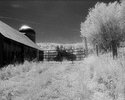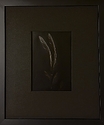TareqPhoto
Member
Congratulations! I'm glad you got 2 outa 3. When I started in high school, my first couple rolls were crap and unusable. Nothing makes you want to give up like total failure!
Keep it up, and perhaps you can convince the rest of the photo club to try out developing film
Thank you!
I was reading too much, even printed all the developers sheets i have so far from the websites and was reading about the fixers and different film and so, all that to make the failure less, and even that first roll i think i may get it fine but i think the failure can be many reasons not just the developing process, and for the next films i will develop i will be sure i will not do mistakes much, so i am happy so far and i will not waste time on developing always at home, as i may shoot something serious in the next period and i don't want to sacrifice or take a risk to develop and not sure i may get it or have mistakes, i will send my important to the lab and the rest i will DIY.






